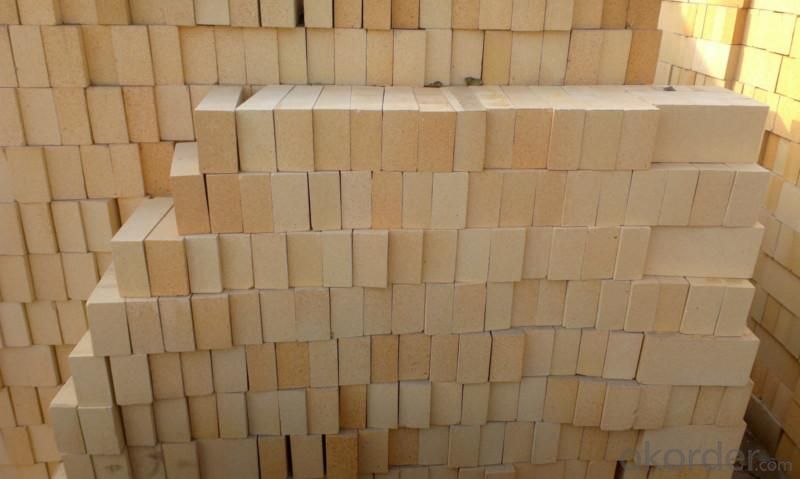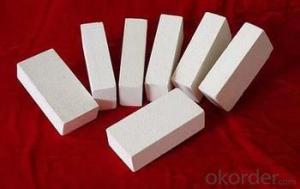glass furnace fire brick price for sale, Sintered zirconia corundum,high aluminum refractory brick
- Loading Port:
- Shanghai
- Payment Terms:
- TT OR LC
- Min Order Qty:
- 1 m.t.
- Supply Capability:
- 111 m.t./month
OKorder Service Pledge
OKorder Financial Service
You Might Also Like
Specifications
1.High compression strength
2.Top high-temperature capablility.
3.Excellent thermal stability.
4.Low thermal conductivit
Product Description
Material: Fused mullite, fused ziconia and zircon sand.
sintered,competitive price,Use:glass bath,thermal storage tank,ceramic
Sintered zirconia corundum refractory used of fused mullite, fused zirconia and zircon sand as the main raw material, adding
high performance powder, after mixing, drying, forming, firing at high temperature shuttle kiln made. The material is widely used in
the glass bath, thermal storage tank, ceramic frit kiln, and chemical furnace lining and other equipment. Products, dimensions, physical and chemical indicators of useful life are up to customer requirements.
ITEM | Sintered zirconia corundum refractory |
ZrO2% | 30 |
SiO2% | 18 |
AL2O3%≥ | 50 |
FE2O3%≤ | 0.5 |
Bulk density(g/cm3)≥ | 3.2 |
C.C.S(kgf/cm2)≥ | 100 |
Highest working temperature | 1700 |
A.P.%≤ | 16 |
- Q: Introduction of high alumina brick
- Three alumina silicate refractory product with a content of two Al2O3 (48%).
- Q: What are the requirements for Rubble backfill height?
- Backfill should be filled with large stones, big face, small face upward, the decoration is stable, and then use small stones leveling, the gap between the stones can be swept into the slag, gravel, so that the gap filled.
- Q: How are the high alumina bricks fired?
- According to the quality requirements of different grades of high alumina brick, choose different grades of bauxite raw materials, it is conducive to rational use, fine materials, fine distribution, as far as possible not to use mixed grade severe raw materials. The quality of the clinker depends on the calcination temperature, calcination temperature, sintering temperature should be generally reached or slightly higher than that of alumina clinker sintering, to ensure the full and possible high volume density, and the two secondary Mullitization and sintering shrinkage effect in calcination process. Lightweight high alumina brick, also known as high aluminum insulation brick (high-aluminium heat insulating brick). A lightweight refractory consisting of mullite and glass phases or corundum in excess of 48%. The volume density is 0.4 ~ 1.35g/cm3. The porosity is 66% ~ 73%, and the compressive strength is 1 ~ 8MPa. Better thermal shock resistance.
- Q: The cloth blowing is not uniform on the lime kiln refractory brick is damaged it
- People with the shaft kiln cement clinker kiln, because of small size, low calcination temperature, using only Al2O3 containing a single clay brick is 30 ~ 40%, the rotary kiln was improved in the early Yuan faith this experience, use of high alumina brick and clay brick, from 60s onwards, due to large scale kiln and to strengthen the operation of the high temperature parts of kiln lining, alkaline brick masonry is widely used, the main varieties are: magnesia chrome brick, magnesia spinel brick and dolomite brick.
- Q: How to make refractory bricks and boiler wall adhesion more firm?
- If the condition, the user heat-resistant steel welding grip nails, expansion joints can not be too big.. Also to use high temperature aluminum brick, high temperature resistance, but also to extend its use cycle.
- Q: Aluminum content 38, silicon content 55 What refractory bricks?
- Hello Only on behalf of the Zhengzhou colt as refractory product index your answer to this question is not entirely separate from the chemical index of aluminum content, silicon content and judgment, personally think that three types of refractory bricks may respectively is: Two: semisilica brick high alumina brick
- Q: What is the content of free silica in the refractory bricks of high alumina bricks?
- Refractory powders are not rich in free silica in varying degrees
- Q: What are the characteristics of high alumina bricks?
- High thermal stability, fire resistance above 1770. Slag resistance is good, used for masonry steel smelting furnace, glass furnace, cement rotary furnace lining. High R.U.L, low creep high alumina brick with high grade bauxite, fused corundum, fused mullite as main raw material of high-grade refractory materials.
- Q: Corundum, high alumina and fireclay refractory difference is what
- In fact, they are not consistent with raw materials, corundum refractories can use white corundum, white corundum, brown corundum corundum material, alumina content of these materials is higher than 90%, while the high aluminum refractory material is bauxite, alumina in 90 to less than 70, and clay raw materials the aluminum content is less than 70..
- Q: How can the refractory brick blast furnace be pulverized and pulverized enough not to be taken away by the wind?
- Top burning type hot blast stoveIt means that the burner is installed on the top of the hot blast furnace of the iron making equipment, and it does not need a special combustion chamber in the vault space. It is also called a non combustion chamber type hot blast stove.
Send your message to us
glass furnace fire brick price for sale, Sintered zirconia corundum,high aluminum refractory brick
- Loading Port:
- Shanghai
- Payment Terms:
- TT OR LC
- Min Order Qty:
- 1 m.t.
- Supply Capability:
- 111 m.t./month
OKorder Service Pledge
OKorder Financial Service
Similar products
Hot products
Hot Searches
Related keywords
























